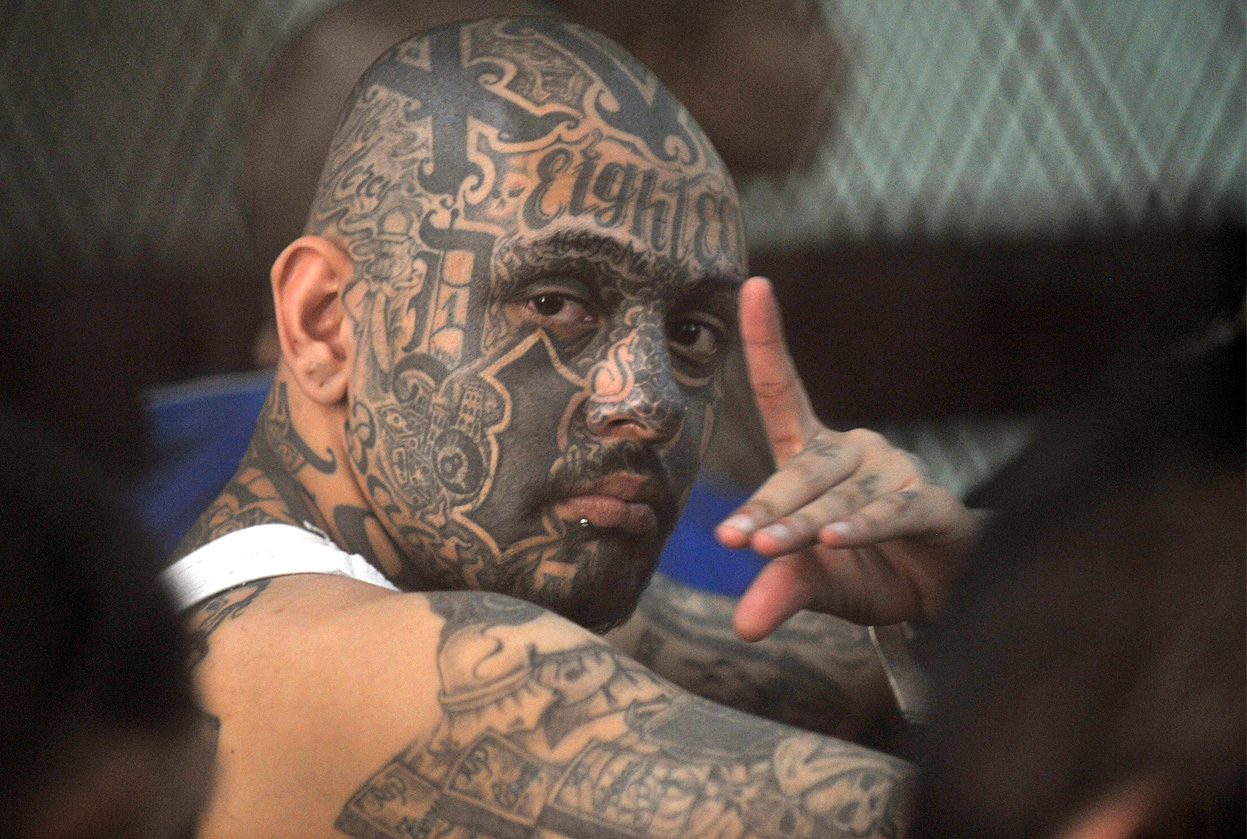I recognize you by ... tattoo
The FBI is going to introduce a system of identification using a tattoo using AI

Here the system is unlikely to make a mistake - such works are very rare.
Image recognition using artificial intelligence systems is not uncommon today. Actually, such algorithms are not artificial intelligence, but the companies that develop them, still prefer this term. So, the FBI, together with the National Institute of Standards and Technology of the USA, has been developing a tattoo identification system for several years in a row . The idea is simple - to catalog the profiles of people according to their body drawings. The idea is interesting, although representatives of the same Electronic Frontier Foundation believe that such work is a violation of human rights, since tattooing is a way of expressing one’s opinion.
')
During the development of this system, the FBI used 15,000 snapshots of prisoners and people arrested on charges of this or that offense. Many tattoos contain personal information (names of loved ones, faces of people, dates of birth, blood type, and so on). Therefore, some lawyers believe that it is impossible to use a tattoo for personal identification. On the other hand, in many cases, these images can indicate the identity of the offender much faster than the same DNA analysis or verification of fingerprints with the catalog.
In the next phase of the study (Tatt-E), it is planned to use about 100,000 photographs of criminals and detained offenders from the staff of Florida, Michigan, Tennessee. Actually, this stage is already being implemented. At the entrance of the work, the perpetrators of one or another religious group (crosses, crescents, other religious symbols) are investigated.

Photo: Oliver Strewe via Getty Images
Here the question may arise, what is the difference between current work and tattoo catalogs, which are available in the majority of law enforcement agencies in different countries. The answer is that the algorithm can identify a person by a single tattoo or a set of them. Moreover, the system will immediately be able to determine which criminal group the detainee belongs to. Yes, the accuracy will not be 100%, but the probability of correct identification is quite high. True, mistakes here are fraught with imprisonment for the innocent. But law enforcement officers will not only use tattoos, this is understandable - during the judicial procedure, the person’s identity will be checked repeatedly.
As you can see, the tattoo recognition system is part of the Next Generation Identification (NGI) project. This is a system that is intended to replace dactyloscopic identification. For a long time, the base of prints was the main biometric base of the FBI. Now identification will be made on a number of different biometric data.
The database includes the same fingerprints , pictures of the iris of the eye, photos of scars, as well as photos of tattoos, plus photos of people's faces. At the moment, the database contains data on several tens of millions of people.
According to the FBI, their system has been legally reviewed for compliance with US privacy laws. However, human rights activists are unhappy - representatives of human rights organizations claim that the new FBI system will allow secret data collection not only about citizens who have committed a crime, but also to monitor those that have never come into the view of law enforcement.


Here the system is unlikely to make a mistake - such works are very rare.
Image recognition using artificial intelligence systems is not uncommon today. Actually, such algorithms are not artificial intelligence, but the companies that develop them, still prefer this term. So, the FBI, together with the National Institute of Standards and Technology of the USA, has been developing a tattoo identification system for several years in a row . The idea is simple - to catalog the profiles of people according to their body drawings. The idea is interesting, although representatives of the same Electronic Frontier Foundation believe that such work is a violation of human rights, since tattooing is a way of expressing one’s opinion.
')
During the development of this system, the FBI used 15,000 snapshots of prisoners and people arrested on charges of this or that offense. Many tattoos contain personal information (names of loved ones, faces of people, dates of birth, blood type, and so on). Therefore, some lawyers believe that it is impossible to use a tattoo for personal identification. On the other hand, in many cases, these images can indicate the identity of the offender much faster than the same DNA analysis or verification of fingerprints with the catalog.
In the next phase of the study (Tatt-E), it is planned to use about 100,000 photographs of criminals and detained offenders from the staff of Florida, Michigan, Tennessee. Actually, this stage is already being implemented. At the entrance of the work, the perpetrators of one or another religious group (crosses, crescents, other religious symbols) are investigated.

Photo: Oliver Strewe via Getty Images
Here the question may arise, what is the difference between current work and tattoo catalogs, which are available in the majority of law enforcement agencies in different countries. The answer is that the algorithm can identify a person by a single tattoo or a set of them. Moreover, the system will immediately be able to determine which criminal group the detainee belongs to. Yes, the accuracy will not be 100%, but the probability of correct identification is quite high. True, mistakes here are fraught with imprisonment for the innocent. But law enforcement officers will not only use tattoos, this is understandable - during the judicial procedure, the person’s identity will be checked repeatedly.
As you can see, the tattoo recognition system is part of the Next Generation Identification (NGI) project. This is a system that is intended to replace dactyloscopic identification. For a long time, the base of prints was the main biometric base of the FBI. Now identification will be made on a number of different biometric data.
The database includes the same fingerprints , pictures of the iris of the eye, photos of scars, as well as photos of tattoos, plus photos of people's faces. At the moment, the database contains data on several tens of millions of people.
According to the FBI, their system has been legally reviewed for compliance with US privacy laws. However, human rights activists are unhappy - representatives of human rights organizations claim that the new FBI system will allow secret data collection not only about citizens who have committed a crime, but also to monitor those that have never come into the view of law enforcement.

Source: https://habr.com/ru/post/394931/
All Articles